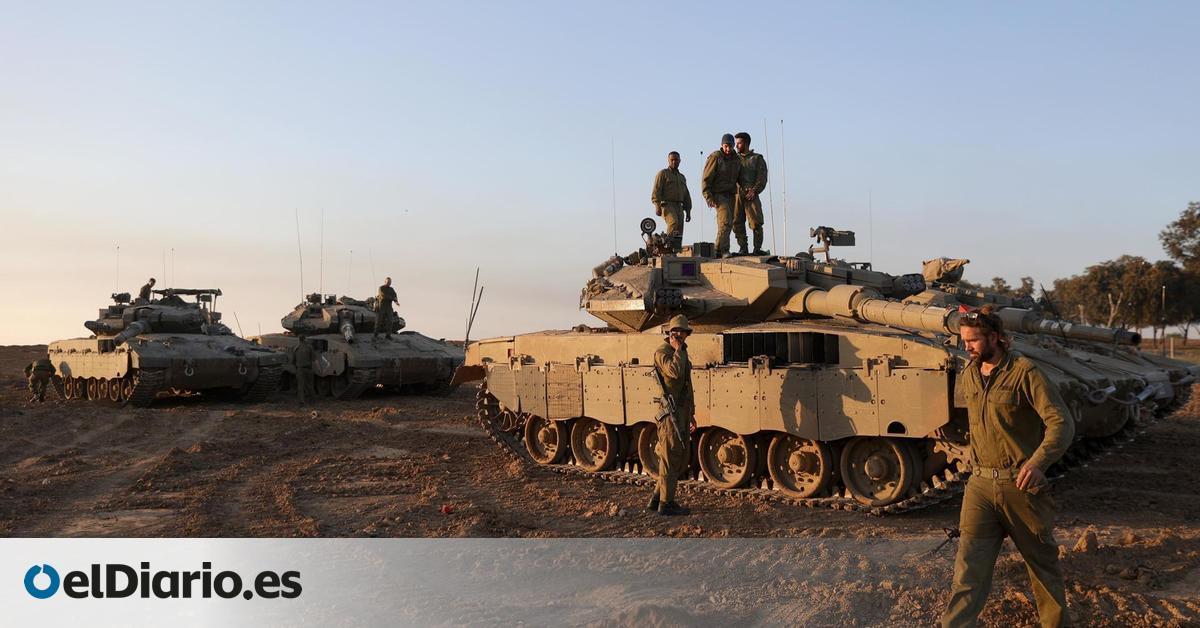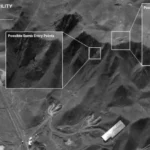
After the violence has ceased for seven days since November 24, this Friday the agreement between Israel and the Islamist group Hamas for a cessation of hostilities and the daily exchange of ten Israeli hostages for 30 Palestinian prisoners ended. The mediators have not been able to get Israel and Hamas to agree to an extension of the truce, and the bombs have fallen again on Gaza, where 109 people have died so far today, according to data from the Gaza Ministry of Health.
Israel has justified the resumption of attacks by a violation of the pause by Hamas, which has launched numerous projectiles into Israeli territory, where anti-aircraft alarms sounded again today. “Hamas violated the operational pause and also fired into Israeli territory. “The Israel Defense Forces have resumed fighting against the Hamas terrorist organization in the Gaza Strip,” the Army said in a statement. A few hours later, he claimed to have attacked “200 terrorist targets” by air, land and sea in the Palestinian enclave since 05:00 in the morning (06:00 in Spain).
Since that moment, at least 109 Gazans have died and hundreds have been injured, the Strip’s Ministry of Health, controlled by Hamas, has reported. According to Palestinian media, the Israeli attacks cover the north and south of the Palestinian enclave, including the towns of Jan Younis and Rafah, considered ‘safe’ until now and where hundreds of thousands of residents who left the city have taken refuge. northern area.
As has circulated on social media, Israel has dropped pamphlets in Khan Younis asking its residents to move even further south, to Rafah, on the border with Egypt. “The city of Khan Yunis is a dangerous combat zone,” the pamphlet notes. The Army has also published a map of the Strip in which it divides the entire territory into different areas to which it assigns a number and which it says will serve to facilitate the evacuation of civilians when ordered.
The mediators, led by Qatar, have not been able to get Israel and Hamas to agree to extend the truce, which was extended for two days last Monday and another day, on Thursday, on the edge. The Qatari Foreign Ministry reported in a statement that “negotiations between the two parties continue with the aim of returning to a pause” in hostilities. “Qatar is committed, together with its mediating partners, to continuing the efforts that led to a humanitarian pause and will not hesitate to do whatever is necessary to return to calm” in Gaza, he assured on Friday morning. He has also noted that “the continued bombing of the Gaza Strip in the first hours after the end of the pause complicates mediation efforts.”
Doha was the one who announced the terms of the first agreement, which required weeks of talks and, every day since last Friday, it has reported on every step of the exchange of Israeli hostages in the hands of Hamas for Palestinian prisoners and minors in prisons in Israel. From November 24 to 30, 110 captives have been released in exchange for 240 Palestinian prisoners and, according to Tel Aviv, there are still 137 hostages in the Strip, including children. The release of the foreigners kidnapped by Hamas has been obtained in parallel negotiations between the Islamists and the respective countries of origin of the hostages, outside the agreement sealed between Hamas and Israel.
The US Secretary of State, Antony Blinken, who visited Israel this Thursday for the fourth time since the outbreak of the conflict on October 7, has noted “a very positive evolution in the last week.” “From day one, we focused tirelessly on trying to achieve the release of the hostages in Gaza,” said Blinken, who also sought an extension of the truce that would make it possible to hand over all those kidnapped.
The United States has pushed for a ceasefire after backing Israel in the first weeks of its offensive on the Gaza Strip, which killed more than 15,000 people between October 7 and the truce taking effect. , on November 24, according to data from the Gazan Government.
Israel had promised on several occasions that after the truce it would resume its military campaign in Gaza – where its troops have remained deployed in the north – until it achieves its main objective: “dismantling Hamas.” The Biden Administration has asked for more details about how it will do so and also for caution from the Israeli Army in its advance towards southern Gaza, where hundreds of thousands of displaced people from the rest of the enclave have left.
According to UN figures, two thirds of the inhabitants of the Palestinian enclave have had to leave their homes due to violence since the 7th. In the week of truce, some returned but found their houses uninhabitable or badly affected by the attacks. Israelis (who have destroyed or damaged some 300,000 homes). During the cessation of the bombings, Gazans have also taken the opportunity to search for the missing, who were probably buried when their houses collapsed – local authorities estimate that around 6,500 people are under the rubble.
Another of the main aspects of the agreement between Israel and Hamas was the entry of humanitarian aid to the Gaza Strip, to which hundreds of trucks with humanitarian aid, medical supplies, gasoline and cooking gas have been able to access in recent days. Only during the implementation of the truce have tanker trucks arrived from Egypt, through the Rafah border crossing, with fuel and cooking gas, both essential for Gazans. Humanitarian organizations have called for the flow of food, water, fuel and medical supplies to continue, and increase, to alleviate the suffering of civilians.
The UN humanitarian coordinator in the Palestinian Territories, Lynn Hastings, has said through the social network X (formerly Twitter) that “the parties must protect civilians and offer access to humanitarian actors to deliver (aid) throughout the Strip according to needs and according to International Humanitarian Law.” And she added that “humanitarian aid must continue unconditionally.”
Today, children, women & men in #Gaza and #Israel woke up again to war.
Parties must protect civilians & provide access to humanitarian actors to deliver across #Gaza according to needs as per #InternationalHumanitarianLaw.
Humanitarian aid must continue unconditionally.… pic.twitter.com/i65mhIqddg
— Lynn Hastings (@LynnHastings) December 1, 2023
Source: www.eldiario.es

